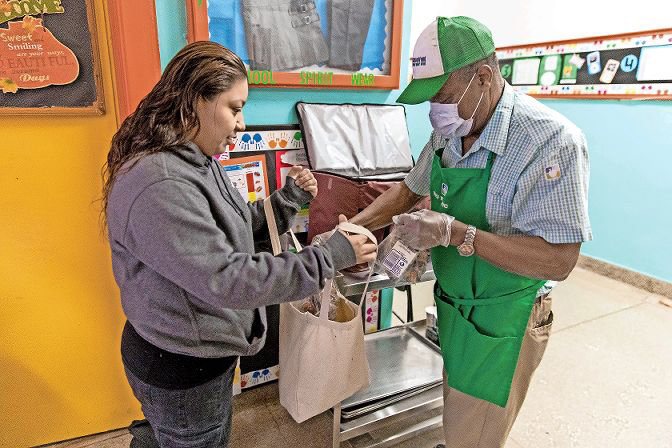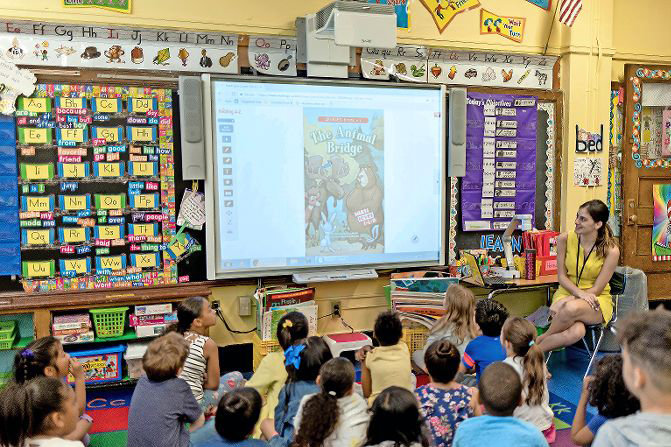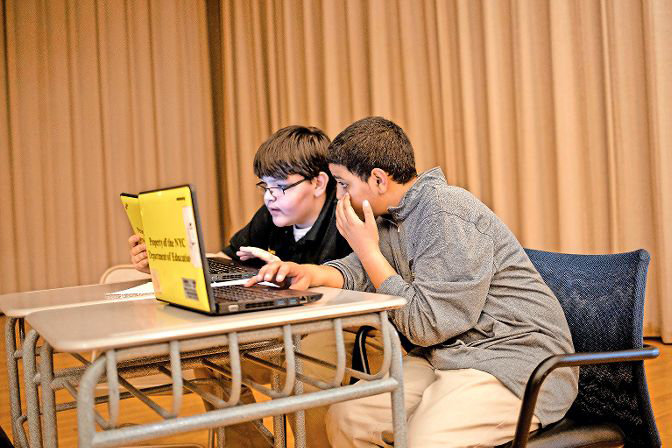Not all teachers convinced schools can reopen soon
Just hours before the city’s largest teachers union was ready to call for a strike, Mayor Bill de Blasio conceded a two-week standoff that would push back the physical reopening of school campuses by nearly two weeks.
Still, there’s a lot to do between now and Sept. 21 — even if not everyone is keen on the deal United Federation of Teachers president Michael Mulgrew struck with de Blasio. In fact, rather than breathe a sigh of relief, many have actually described the decision to delay as “kicking the can further down the road,” rather than addressing obstacles standing in its way now.
Alexandra Haridopolis, an English as a New Language teacher at a high school within the local school district, didn’t find the decision to delay reopening reassuring, nor does she think much can be done to improve conditions in less than two weeks.
“They literally said, ‘We’re delaying because we want to make sure the health and safety protocols are being met,’ which means that they were going to send us in there without them having been met,” Haridopolos said.
UFT released a reopening fact sheet to teachers explaining schools would remain closed to students “while final safety arrangements are completed.” That means a school nurse in every building, checks of campus ventilation systems, and ensuring there are enough protective and cleaning supplies to go around.
Those are words of encouragement for Michael Simmon, an eighth-grade social studies teacher at IN-Tech Academy — especially since he’s itching to get back to his classroom. Even though the academic year will present some new challenges, Simmon believes there are adequate resources to meet those challenges.
“You want it where everybody is healthy and negative,” Simmon said. “But they are trying to put things in place that will provide for that — from the hand sanitizer to the masks to the random COVID testing.”
Even with new protocols in place to protect school communities, it still isn’t enough for many public school parents. Jonathan Cane’s son is set to start fourth grade at P.S. 81 Robert J. Christen, and he’s quite skeptical of the city’s reassurances of a safe reopening. Because Cane can work from home, his son will start the 2020-21 academic year remotely.
“I would love for him to be around his peers, but the truth of it is there is at least some additional risk in sending him in,” Cane said. “And we don’t know how much it is.”
Many teachers see the reopening delay as the latest example of a poorly planned and executed return to in-person classes. Eric Dinowitz — an educator-turned politician — says teachers are used to planning out nearly every aspect of their jobs, from lesson plans, to individualized education programs, and everything in between.
Yet, these teachers say they haven’t seen that same level of planning from the city.
“I think the city botched this from the beginning,” Dinowitz said. “We know that this is a highly contagious virus. We know how it spreads. And there was almost no plan to address those specific needs.”
Lydia Howrilka, a UFT caucus leader, called Mulgrew’s agreement with de Blasio a “back-door deal,” one which didn’t involve the input of regular union members who are the boots on the ground when it comes to physically reopening the school. And for teachers, returning to school during a pandemic might be a life-and-death situation, as some of them have already fallen victim to the coronavirus.
“We’ve lost 75 UFT members,” Howrilka said. “We just clearly felt our lives, the lives of our colleagues, and the health and safety of our kids … mattered more.”
One of the major areas of contention within the UFT was compromising on coronavirus testing, which originally asked for every person who entered a public school either possess a positive antibody test or a negative coronavirus test. The new agreement has some mandatory testing requirements, but not nearly to the extent some in UFT originally wanted.
Under the new agreement, mandatory testing will occur monthly, but will not encompass the entirety of a school community.
Instead, 10 to 20 percent of the school’s population — students, teachers or otherwise — will be randomly selected for testing. Those results will be available within 48 hours.
But if the testing occurs monthly, Howrilka thinks the virus will be granted too much time to get its hooks into a school, especially if those getting infected aren’t showing symptoms.
“There are high rates of COVID being spread by asymptomatic spreaders,” Howrilka said. “It is quite probable that there are many people in schools — students or staff — who may have (the) coronavirus, and they may not even know it.”
The decision to compromise on coronavirus testing also drew ire from the MORE caucus —the Movement of Rank and file Educators — which condemned what it described as the failure to include regular union members in the decision-making process.
But Haridopolos believes the issue goes far beyond poor leadership — whether from the union or from the city itself. To her, the issues both sides are facing indicate wider, systemic problems.
“The reason schools can’t open safely next week or in 10 days is because they’ve been chronically underfunded,” Haridopolos said. “We can have all the Clorox wipes that the mayor feels great about giving us, but that’s not going to change the fact that there’s not a ventilation system in my school. Or that I can’t open the windows more than four inches.”











